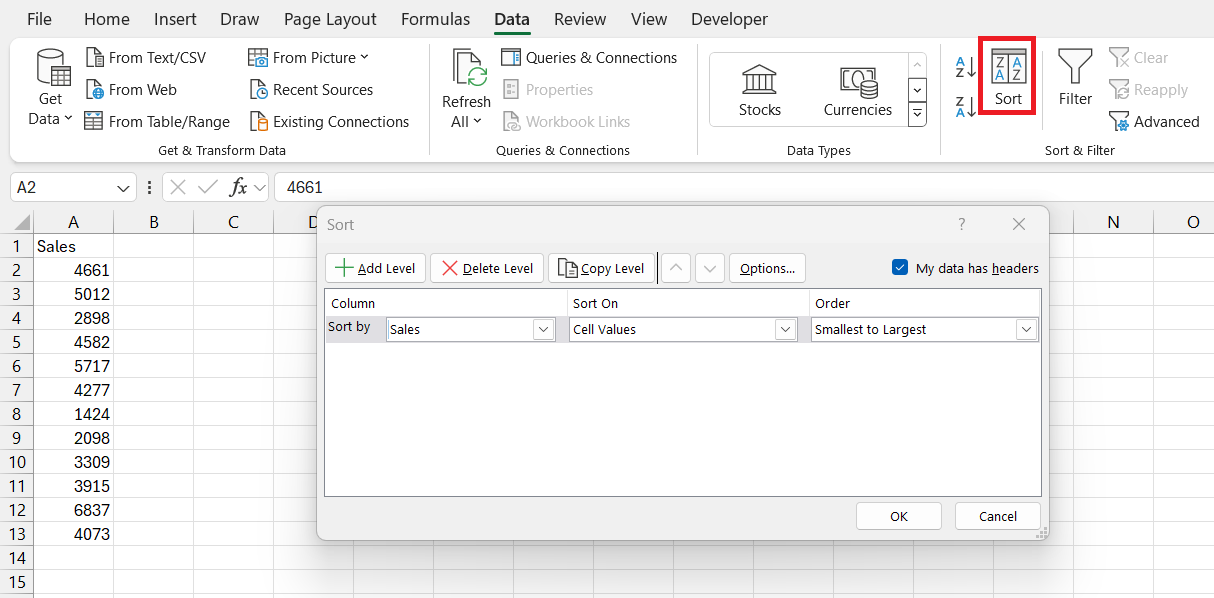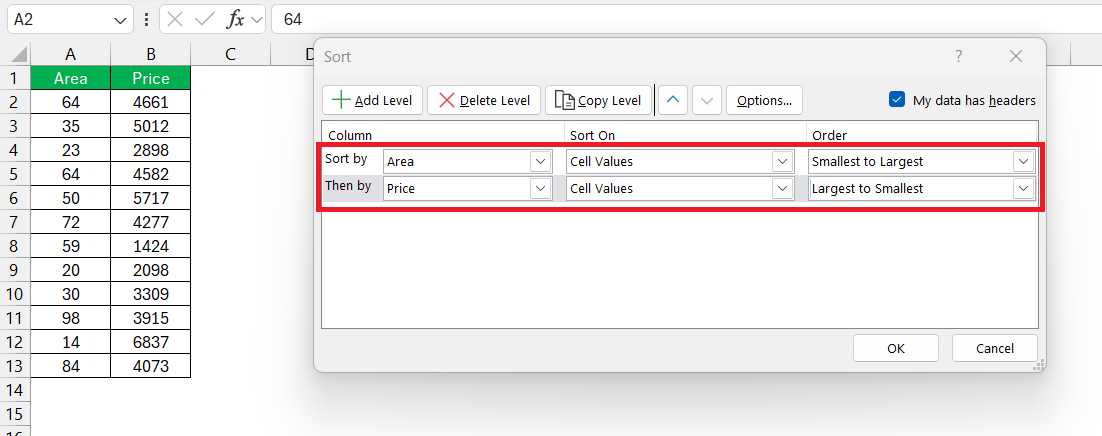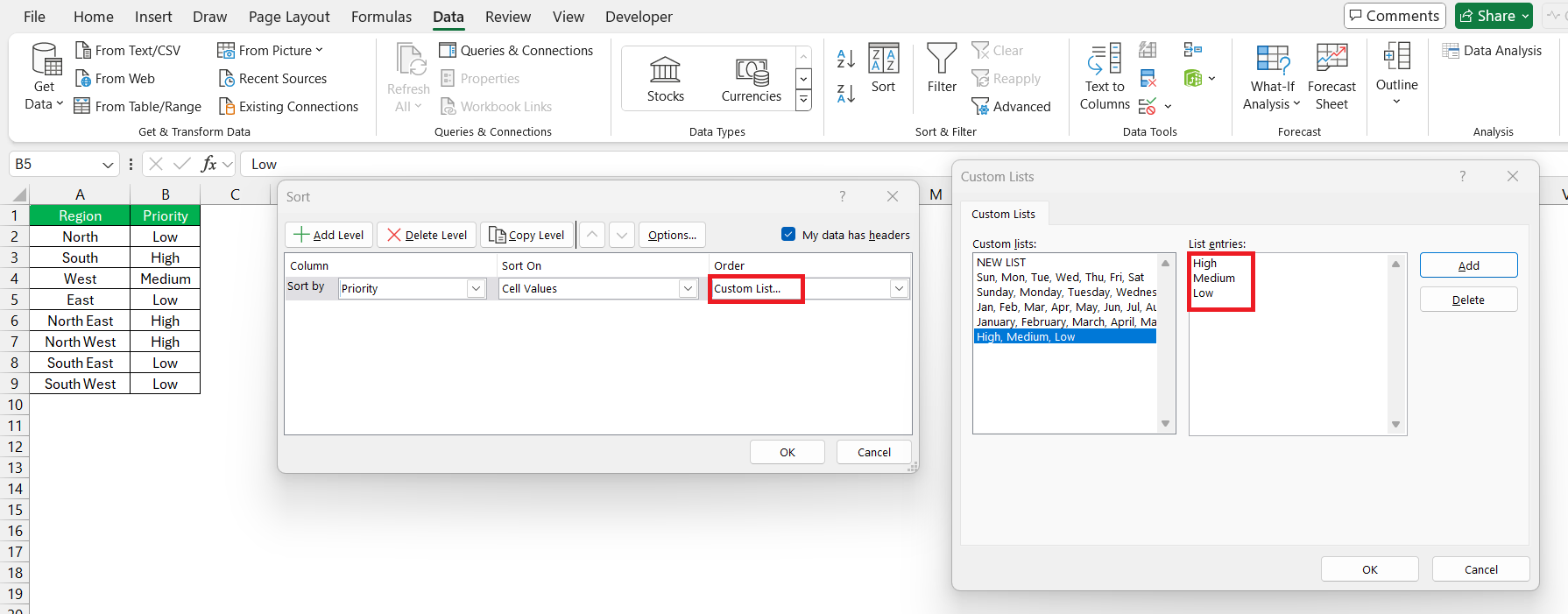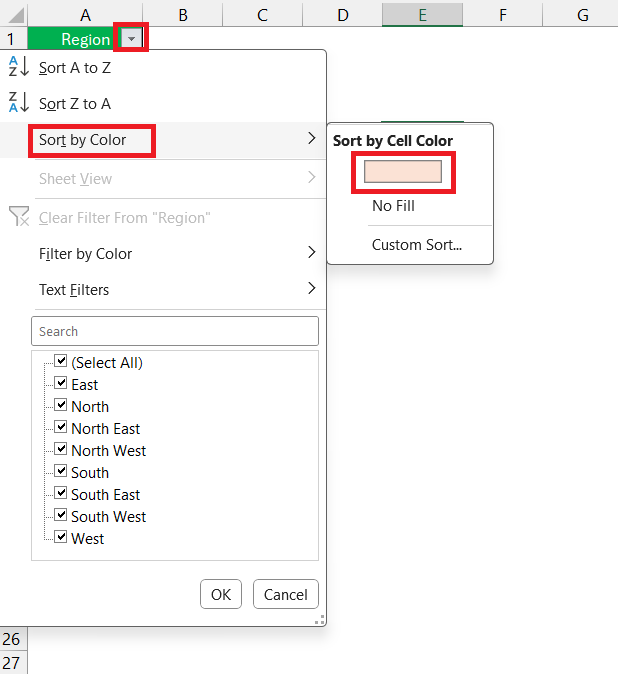Sorting data in Microsoft Excel is a fundamental feature that allows you to organize your information in a meaningful way. You can sort data either in ascending or descending order based on one or more columns, which helps in analyzing and managing data efficiently. Whether you’re sorting alphabetically, numerically, or by date, Excel provides straightforward tools to accomplish this task quickly. In this article, we will understand how to sort data in Excel.
Key Takeaways:
- Sorting data in Excel helps organize information efficiently by arranging it in a meaningful order.
- You can sort data alphabetically, numerically, or by date, making analysis and management easier.
- Excel provides tools for multi-column sorting and custom sort orders to tailor data organization.
- Advanced features like ‘Sort by Color’ and undoing sorts enhance data presentation and flexibility.
- Ensuring data integrity while sorting involves selecting the entire dataset and using headers correctly.
Table of Contents
Introduction to the Art of Sorting in Excel
Why Mastering Sorting is Essential for Data Management
Mastering sorting in Excel isn’t just about organizing data. It’s about unlocking the true potential of your data sets and making sense out of chaos. When you get a grip on sorting, you can streamline data analysis, making it faster to identify trends, understand information, and make critical business decisions with confidence.
Think of sorting as your first step in data management—a powerful catalyst to clarity.
What’s New in Excel’s Sorting Features
Excel continually evolves, bringing new and refined sorting features to the table. These enhancements can significantly impact how you manage and interact with your data. For instance, if you’re using one of the more recent versions like Excel 2019 or later, you’ll notice that it’s easier than ever to sort through large and complex datasets.
Features like multi-column sorting, custom sort orders, and the ability to undo accidental sorts have been optimized. Moreover, Excel’s introduction of ‘Sort by Color’ and recent sorts recall are simply game-changers for data presentation and revisiting your past workflows!
Starting Simple: The Basics of Sorting in Excel
How to Sort Data With Ease
To alphabetize your data in Excel, you no longer need to perform a tedious, step-by-step process. With just a few clicks, your data can be perfectly organized. Start by selecting a cell in the column you wish to sort alphabetically.
Then, navigate to the ‘Data’ tab and click either ‘Sort A to Z’ button or ‘Sort Z to A’ button to order your dataset in ascending or descending alphabetical order.
Remember, this sorts your entire row based on the selected column, making it a breeze to keep related data intact.
Sorting by Numbers: A Quick Guide
Sorting by numbers is as intuitive as alphabetizing your data in Excel. Let’s say your spreadsheet includes columns with numerical data—whether it’s sales figures, survey results, or any other quantifiable information. You’ll simply select the column you want to sort and use the ‘Sort Smallest to Largest’ or ‘Sort Largest to Smallest’ buttons under the ‘Data’ tab.
This reorders your rows based on the selected column’s numerical values, effortlessly arranging numbers either in ascending or descending order. Excel does the heavy lifting so you can spot the highest and lowest values at a glance!
Advanced Sorting Techniques for Pro Users
Sorting Multiple Columns for In-Depth Analysis
When your data analysis requires a more nuanced look, sorting multiple columns can deliver deep insights. For those moments when a single-column sort just won’t cut it, Excel allows you to layer your sorts for a comprehensive breakdown.
Take a complex housing dataset as an example: you might want to sort by area size and then price. To achieve this, select your range, head to the ‘Sort’ dialogue in the ‘Data’ tab, and add levels for each column you want to sort.
Set the priority and order—say, Area in ascending and Price in descending order—and Excel tailors your data view, revealing multifaceted relationships that were previously hidden.
Custom Sorting: Tailoring Data Order to Your Needs
Ever faced a scenario where standard sorting doesn’t meet your needs? Custom sorting has your back, allowing you to define the exact order you require. This feature is particularly handy when dealing with categories like months, weekdays, or priority levels that have a specific sequence.
Dive into the ‘Sort’ dialogue box, choose your column, and instead of the standard sorting options, opt for ‘Custom List‘. You can define your sequence, like January, February, March, or High, Medium, or Low, ensuring your data aligns perfectly with your project’s unique criteria.
Excel empowers you to sort in a way that makes sense for your analysis, not just alphabetically or numerically.
Tips and Tricks for Efficient Sorting
Using Conditional Formatting to Enhance Visibility
Excel’s Conditional Formatting is a powerful tool, making it simple to visually categorize and sort your data. Imagine you’re looking at a grade book, and you want to see how students performed at a glance. By adding color to cells based on their values—green for grades 90 and above, yellow for 80-89, and red for anything below 80—you create an instant visual map.
To sort by these colors, select your data, click on the ‘Filter’ button, and choose ‘Sort by Color’. There, you can sort by cell color, and font color, ensuring that your top performers or priority items stand out at the top of your list.
Troubleshooting Common Sorting Issues
Resolving Unsuccessful Sort Attempts
Sorting can be tricky, especially when you’re greeted with an error or mixed-up data post-sort attempt. If your dataset hasn’t been sorted as you intended, take a deep breath—there’s a quick fix. Before you take any further action, hit the ‘Undo’ button to restore the original order. This prevents additional complications.
Next, revisit your sort settings with a keen eye. Make sure that headers are correctly identified, and that your ‘sort by’ column aligns with the data’s nature. Also, verify the ‘sort order’—whether it’s ascending or descending—and confirm that ‘sort_index’ doesn’t exceed the number of columns. Taking these careful steps usually resolves those pesky hiccups.
Navigating Excel Shuffles: Keeping Data Intact While Ordering
Navigating Excel shuffles while keeping your data intact is critical. The key is ensuring that your rows remain associated with the right information after a sort. Always start by checking the entire row or table is selected to avoid mixing data from different rows.
Watch out for hidden rows or columns, as these can throw a wrench in your sort—unhide them first to include them properly. Filters can obscure rows as well, so clear filters if needed before a sort.
Last, but not least, it’s useful to include a unique identifier for each row, like a row number column, to help track changes and provide a safety net for restoring the original order, just in case. Excel’s ‘Undo’ feature is also always there as your first line of defense against any unintended shuffles.
FAQ Section
How do I sort Data in Excel?
To sort data in Excel, simply select a range or column, head to the ‘Data’ tab, and choose either ‘Sort A to Z’ for ascending or ‘Sort Z to A’ for descending order. Excel will rearrange your rows accordingly, keeping related data together. If you need a specific sort order, click the ‘Sort’ button for more options.
What Are the Most Important Sorting Features in Excel?
The most important sorting features in Excel include the ability to sort data alphabetically, numerically, by date, and using custom lists. Multi-level sorting allows analysis by multiple criteria while sorting by colors or icons adds a visual dimension. Undoing sorts and reapplying recent sorts enhance flexibility and efficiency in data management.
How do I sort columns in Excel without mixing Data?
To sort columns in Excel without mixing data, ensure you select the entire dataset or table before sorting. Use headers to define sorting criteria and check ‘My data has headers’ in sorting dialogues. Avoid sorting single columns independently, and remember to look for hidden rows or columns that could cause data displacement when sorting.
How Can I Sort Data Without Altering the Integrity of My Worksheet?
To sort data without altering the integrity of your worksheet in Excel, always start by highlighting the complete data range you want to sort to maintain row and column relationships. Use table filters or the ‘Sort’ dialog box to specify your sorting preferences, and consider using ‘Freeze Panes’ to keep headers visible. Always save your work before sorting so you can revert back if needed.
How do I sort Data by match in Excel?
To sort data by match in Excel, you can use a custom sort list. First, define the list order you want to sort by. Then go to the ‘Sort’ dialog box, choose the column with the data to match, and select ‘Custom List’ under ‘Order’. Pick your pre-defined list and apply the sort to reorganize the data based on your custom sequence.
John Michaloudis is a former accountant and finance analyst at General Electric, a Microsoft MVP since 2020, an Amazon #1 bestselling author of 4 Microsoft Excel books and teacher of Microsoft Excel & Office over at his flagship MyExcelOnline Academy Online Course.












